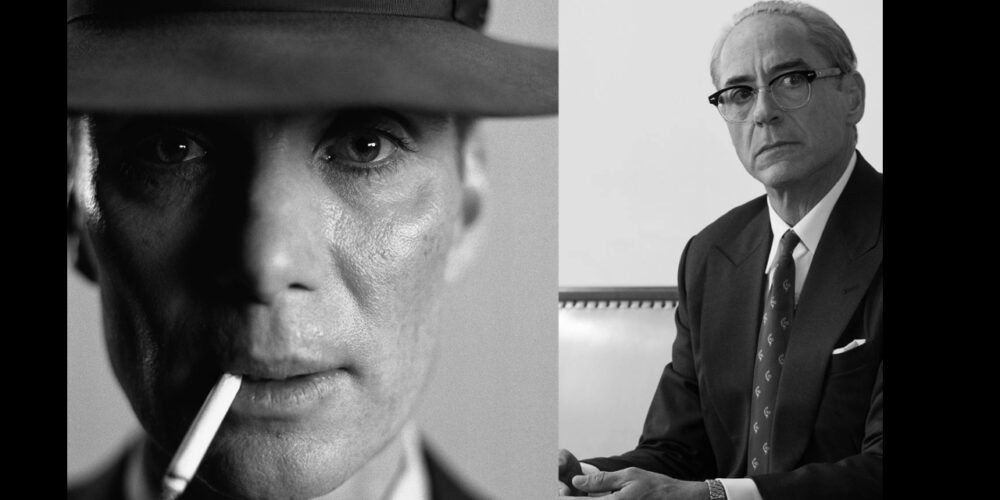Watching Christopher Nolan’s epic Oppenheimer, one thing that jumped out for many people was the movie’s length. Its three-hour stretch is due largely to a subplot related not to the development of the nuclear bombs that ended the war with Japan, but with politics: Oppenheimer’s post-war troubles regarding his security clearance, due to his earlier communist sympathies.
This subplot raises longstanding questions about an alleged injustice: the unreasonable suspicion by conservative elements of American society regarding a communist infiltration. But was this suspicion unreasonable?
We are told that the suspicion resulted in the blacklisting of people merely for their ideas. It was a paranoia, as an author at The Atlantic put it, targeting people espousing “leftist revolutionary causes.”1 It is commonplace in American intellectual life to refer to the ideological war against communism during the early Cold War as a “Red Scare,” “hysteria,” and “McCarthyism.” They compare it to the bombastic and often arbitrary accusations by Senator Joseph McCarthy against real and imagined communists in the early 1950s.
But characterizing all anti-communist investigations of the ’40s and ’50s as “paranoia” ignores a crucial fact: Soviet infiltration was a reality, and if anything its scale and importance were under-appreciated, rather than exaggerated. Those who aided and abetted the Soviet Union were, consciously or by gross evasion, abetting a most murderous ideology. That Americans should be at least suspicious of them is entirely reasonable and just. Let us examine these facts further.
'Those who aided and abetted the Soviet Union were, consciously or by gross evasion, abetting a most murderous ideology.' Share on X
Was Soviet infiltration in the U.S. significant during the 1930s and the 1940s? Unequivocally yes. It was significant in two ways: in its scale, and in its results. We know from declassified records (both American and Soviet) and from confessions of protagonists that more than 200 Soviet spies were operating within the U.S. during this time.2
Soviet spies infiltrated crucial positions in American society. The Soviet spy network probably included a member of Congress (Samuel Dickstein), high-ranking esteemed diplomats (Alger Hiss), prominent government officials (Harry Dexter White, who was among the founding fathers of the International Monetary Fund), journalists, engineers, and esteemed scientists.3 The Communist Party USA (CPUSA) wasn’t an ordinary political party: it was directly funded by the USSR and its core activists helped handle Soviet secret agents.4 Some did the spying opportunistically for money, but most did it consciously as their ideological duty: they supported the vision of the Soviet Union and despised the competing social/economic model of the U.S.
From the farcical-sounding stealing of formulas of perfumes and colognes, to the more grievous espionage on military production of tanks and jets, Soviet spies and collaborators were key in the technological development of the Soviet Union.5 But it was Soviet spying on the U.S. atomic program that would later get most of the public’s attention and produce the most results for the Soviet Union.
The Soviets had an elaborate and grand-scale operation to spy on and steal the secrets of the Manhattan Project, the race by the U.S. (as led by Oppenheimer) to build a nuclear bomb. Code named “Enormoz” (i.e., enormous), it was a huge success: the Soviets had at least three spies (Klaus Fuchs, Theodore Hall, David Greenglass) in the Los Alamos field where the bombs were actually built. This spying network produced a colossal amount of data for the Soviets: think of volumes the size of more than seven copies of War and Peace. This stolen knowledge helped the Soviet Union to build its own nuclear bomb by 1949, much earlier than anyone anticipated, and at a fraction of what the cost would otherwise have been.6
Incidentally, Robert Oppenheimer was not a Soviet spy. We now know this from declassified KGB files, and it was even recognized at the time by the Atomic Energy Commission in the infamous 1954 hearings portrayed in Nolan’s movie. In our moral judgment, it should make a difference whether someone merely sympathized with leftist ideas, like Oppenheimer did, or was a member of a political party that was all but an agent of an enemy power. Thus, Oppenheimer was not a traitor, nor did he deserve such a stain.
'In our moral judgment, it should make a difference whether someone merely sympathized with leftist ideas, or was a member of a political party that was all but an agent of an enemy power.' Share on XBut that U.S. officials should be suspicious about the leakage of nuclear information and the existence of spies in the Manhattan Project was anything but paranoia. After all, by 1949 everyone knew that the USSR had somehow stolen the secrets of the bomb, and by the end of the same year British and American secret services knew that at least one Soviet spy (Fuchs) was operating in Los Alamos — a fact that the movie recognizes in passing but without the proper moral gravity.
The reason it was not paranoid to be concerned with Soviet spying (especially on the U.S. nuclear program) was that the Soviet Union was a brutal dictatorship with aggressive aspirations of subjugating more and more people and of undermining freedom in the USA. Such a regime and all of its agents should be treated with hostility. Historical hindsight especially helps us know that communism was the most murderous political ideology of the 20th century.
But could this have been known at the time of the “Red Scare”? The answer is yes. Already from the late 1930s everything that needed to be known about the Soviet Union was known. Anyone who did not evade could see the rivers of blood spilled by the secret police. Anyone could find out about the slave labor in the Gulags, about the famine that was a conscious and calculated casualty of the forced collectivization of the land, about the purges during the Great Terror, and about the show trials that liquidated the vast majority of the protagonists of the 1917 revolution and hundreds of thousands of innocent people. Anyone with eyes could see the despicable alliance of the Soviet Union with Nazi Germany in 1939, sealed with the Molotov-Ribbentrop pact, and the later subjugation of half of Europe post-1945 by the brute force of the Red Army. As the former-Marxist historian Eugene Genovese put it in an open letter to his former comrades: “What did we know, and when did we know it? We knew everything essential and knew it from the beginning.”7
Thus, irrespective of the conscious intentions of red spies and collaborators, history has shown that they have blood on their hands: the blood of tens of millions in the Soviet Union, in China, and in the global-reaching empire of terror established by the regime they served.
Christopher Nolan had a difficult job: morally evaluating historical figures like Oppenheimer is perplexing. There are still details we don’t know about Oppenheimer, or about the bureaucrats who campaigned against his security clearance in the 1950s. But when it comes to the many others who we do know were Soviet spies or who worked for the interests of a bloody dictatorship, the verdict should come easily: they deserve our scorn, and a place in the dark pages of history, like the abettors to mass murder they were.
Image credit: courtesy of Universal Pictures.
Do you have a comment or question?
Endnotes
- David Sims, “Oppenheimer Is More Than a Creation Myth About the Atomic Bomb,” Atlantic, July 19, 2023.
- John Earl Haynes, Harvey Klehr, and Alexander Vassiliev, Spies: The Rise and Fall of the KGB in America (New Haven, CT: Yale University Press, 2009), Kindle edition, loc. 141.
- Haynes, Spies, loc. 141.
- Michael Hobbs, “U.S. Party Said Funded by Kremlin,” Washington Post, February 8, 1992.
- Svetlana Lokhova, The Spy Who Changed History: The Untold Story of How the Soviet Union Won the Race for America’s Top Secrets (London: William Collins Publishers, 2019).
- Haynes, Spies, loc. 1985.
- Eugene D. Genovese, “The Question,” Dissent, Summer 1994, 374.







